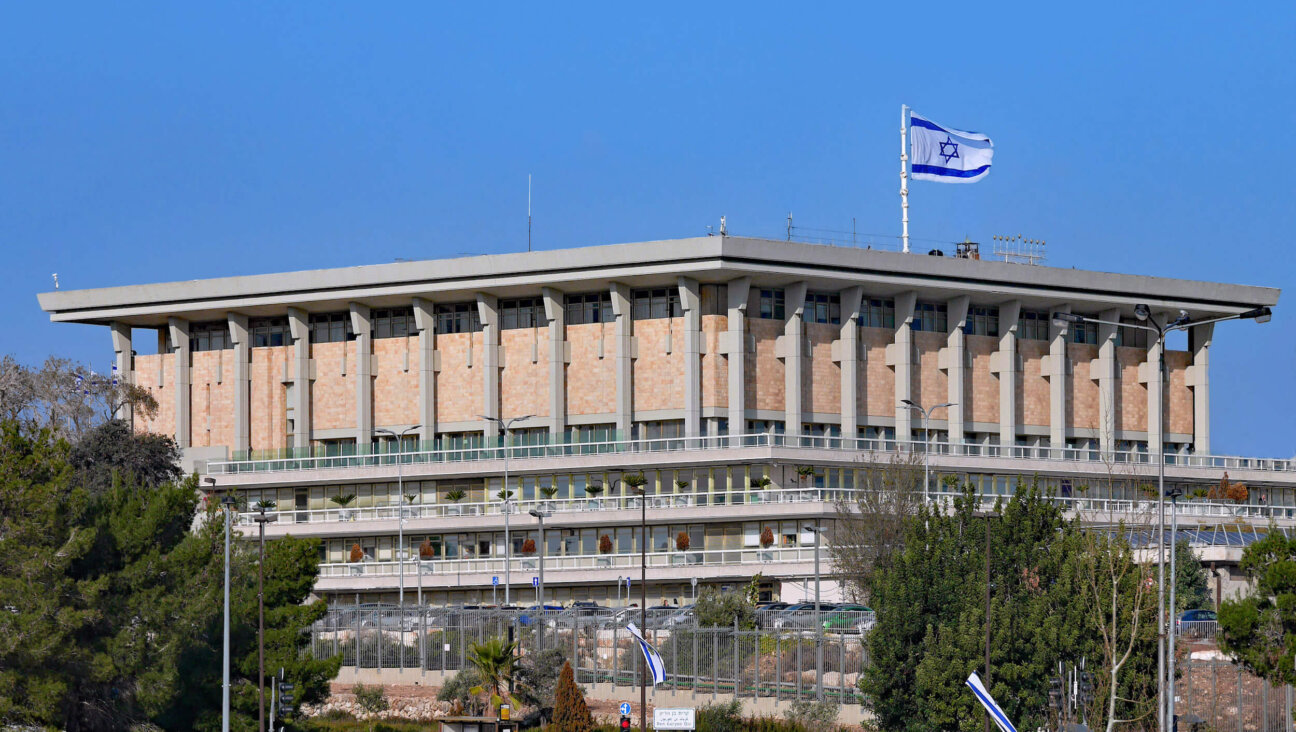Why We Mourn the Loss of Streit’s Matzo

Image by Getty Images
A worker at Streit’s Matzo Factory on the Lower East Side / Getty Images
This week brought news of the closing of Streit’s Matzo Factory on the Lower East Side, a landmark that has been there since 1925.
For the past fifteen years, on the Sunday before Passover, on behalf of the Museum at Eldridge Street, I have led a walking tour of the Lower East Side with my colleague Hanna Griff-Sleven, a folklorist. Billed as a “journey into the kishkes of the old Jewish Lower East Side,” it is an annual ritual I love.
We visit sites established by the Jewish immigrant community of the late 19th and early 20th centuries, places like the Forward Newspaper Building on East Broadway, Jarmulowsky’s Bank, Loew’s Theatre and Seward Park Library. On our walk, we also stop at kosher eateries that were established by Jewish immigrants, their descendants and new entrepreneurs — places like The Pickle Guys and Kossar’s Bialys.
Streit’s, on Rivington and Suffolk, was our ultimate destination. There the group would sample the warm matzo fresh off the conveyor belt, and purchase kosher for Passover products, old favorites as well as recent innovations like muesli and garlic aioli with dill.
Every year, the tour gets harder and harder to lead. The buildings still stand but only a few serve their original function. The Forward Building, once a bastion of socialism with relief portraits of Karl Marx and Friedrich Engels on its façade, today offers luxury housing. Jarmulowsky’s Bank, dressed in scaffolding, is being converted into a boutique hotel. The beautiful library and settlement houses still do a brisk business albeit for a different, predominantly Chinese, immigrant community.
Hanna and I keep a running list of vanished sites, lost places of Jewish significance. Ratner’s in 2002. The collapse of the First Roumanian-American Synagogue in 2006. The loss of Kadouri Nuts and Gertel’s on Hester Street. They are replaced often by upscale building projects — or, in the case of Kadouri’s, a gaping hole. Last year we stood in front of this empty lot, and raised tiny plastic kiddush cups with a splash of Slivovitz in memoriam. We remembered all of the lost sites. I started with my personal favorite: Shmulka Bernstein’s, where back on Lower East Side pilgrimages in the 1970s and 80s my sister and I would order spare ribs and fried rice from waiters in short red jackets and tassled hats. “Miller’s Cheeses on Essex Street,” someone threw out. “The Garden Cafeteria,” said another.
To end on an uplifting note, we decided to toast as well to culinary landmarks in the making. Not Jewish, but Chinese. Like Vanessa’s Dumpling just a few blocks north of the museum on Eldridge Street. The pulled noodle places. These eateries, many just holes in the wall, are the gathering place for a new generation of immigrants as well as hipsters who have discovered the neighborhood. For these newcomers, the dynamic mix of cultures, including the residual Jewish vendors, make the area vibrant.
For someone who works at a museum dedicated to the preservation of the Eldridge Street Synagogue, a place that pays tribute to the American Jewish immigrant experience, it is a strange position to be in. A recent piece in the excellent downtown blog Bowery Boogie noted: “For the Jewish community nationwide and for the descendants of immigrants of all backgrounds whose families passed through the neighborhood over the course of the last century or who remain here, it is the loss of a connection to a Lower East Side that is ever more the domain of museums and memory than of daily life.”
Our job, and that of collegial institutions like the Tenement Museum and the Lower East Side Jewish Conservancy, is invaluable. Thanks to our work at Eldridge Street, an irreplaceable artifact of an earlier time is still standing. Thousands of people come to Eldridge Street to learn, celebrate and be inspired. On the Sabbath and holidays, a small group still prays.
But who cannot mourn the passing of these places and feel bittersweet about the ever-evolving nature of the Lower East Side? This year, on our Passover Nosh & Stroll, we will visit Streit’s one last time and raise a glass of Slivovitz in their honor. We wish them luck in their new home, but we will miss them and their delicious warm matzo.
Amy Stein-Milford, the Deputy Director of the Museum at Eldridge Street, is working on a family memoir about the Lower East Side and her father’s experience with Alzheimer’s.















